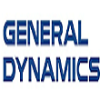Geometric Dimensioning and Tolerancing (GD&T) plays a critical role in manufacturing by defining acceptable variations in part features to ensure component quality and functionality. However, extracting GD&T information from 2D engineering drawings is a time-consuming and labor-intensive task, often relying on manual efforts or semi-automated tools. To address these challenges, this study proposes an automated and computationally efficient GD&T extraction method by fine-tuning Florence-2, an open-source vision-language model (VLM). The model is trained on a dataset of 400 drawings with ground truth annotations provided by domain experts. For comparison, two state-of-the-art closed-source VLMs, GPT-4o and Claude-3.5-Sonnet, are evaluated on the same dataset. All models are assessed using precision, recall, F1-score, and hallucination metrics. Due to the computational cost and impracticality of fine-tuning large closed-source VLMs for domain-specific tasks, GPT-4o and Claude-3.5-Sonnet are evaluated in a zero-shot setting. In contrast, Florence-2, a smaller model with 0.23 billion parameters, is optimized through full-parameter fine-tuning across three distinct experiments, each utilizing datasets augmented to different levels. The results show that Florence-2 achieves a 29.95% increase in precision, a 37.75% increase in recall, a 52.40% improvement in F1-score, and a 43.15% reduction in hallucination rate compared to the best-performing closed-source model. These findings highlight the effectiveness of fine-tuning smaller, open-source VLMs like Florence-2, offering a practical and efficient solution for automated GD&T extraction to support downstream manufacturing tasks.
翻译:暂无翻译





